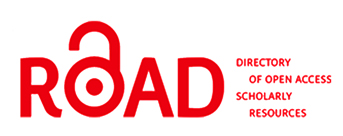UPAYA PEMERTAHANAN BAHASA AREK SUROBOYO
Abstract
The era of the industrial revolution 4.0 brings convenience to accelerate and expand the distribution of information. For regional languages, this situation can not only be seen as a challenge but also an opportunity. The application of regional languages as a communication tool as well as a marker was captured as an opportunity by one of the regional information accounts, Asli Suroboyo. Among the Instagram accounts based on regional information, AsliSuroboyo is one of the accounts that survives with its trademark, namely using the Javanese dialect of Arek as a medium of communication. The purpose of this study is to describe the efforts to maintain the Javanese dialect of Arek on the AsliSuroboyo Instagram account. The method used is a qualitative descriptive method with primary data sources coming from uploads and captions on Suroboyo's original Instagram account, while secondary data is obtained from a literature study on related topics. The data were analyzed descriptively to examine the relationship between uploads and captions used in the AsliSuroboyo account with efforts to maintain the Javanese dialect of Arek. The results of the study show that the AsliSuroboyo account consistently uses the Javanese dialect of Arek as a medium of communication. The use of Javanese dialect of Arek can not only be interpreted as an effort to maintain language as a communication tool, but can also be used as a means of showing regional identity. Through these efforts, followers of the AsliSuroboyo Instagram account can also feel attached and can introduce their regional identity to a wider scope.
Full Text:
PDFReferences
Ambarita, E. (2019). Ancaman Kepunahan Bahasa-Bahasa Daerah di Era Globalisasi-Sebab-Musabab. https://doi.org/10.13140/RG.2.2.22542.61761
Antika, S. (2014). Variasi Bahasa pada Akun Twitter @aslisuroboyo: Suatu Kajian Sosiolinguistik. UNIVERSITAS AIRLANGGA.
Campbell, L. (2008). Ethnologue: Languages of the world. JSTOR.
Davies, R. B., Liebman, B. H., & Tomlin, K. (2019). Trade liberalization in services: Investor responses to NAFTA’s cross-border trucking provisions. Journal of International Trade and Economic Development, 28(8), 935–959. https://doi.org/10.1080/09638199.2019.1610473
Djajasudarma, T. F. (2006). Metode linguistik: Ancangan metode penelitian dan kajian.
Faraba, K. S. A. (2019). Kesantunan dan komunikasi fatis sapaan masyarakat budaya arek pada akun instagram: kajian pragmatik. UNS (Sebelas Maret University).
Fishman, J. A. (2013). Current Multilingualism: Contribution to The Sociology of Language. Boston: Walter de Gruyter.
KBBI, T. P. (2021). Kamus Besar Bahasa Indonesia Daring. Balai Pustaka: Jakarta.
Kesuma, T. M. J. (2007). Pengantar (metode) penelitian bahasa. Yogyakarta: Carasvatibooks.
Poerwadarminta, W. J. S. (1939). Baoesastra Djawa. JB Wolters.
Satmata, R. (2016). Pengaruh Akun Instagram “Aslisuroboyo†Terhadap Peningkatan Informasi Kota Surabaya. Stikosa-AWS.
Suciartini, N. N. A. (2018). Eksistensi Bahasa Bali Di Ranah Milenial (Studi Kasus Kemunculan Parodi Hai Puja). Kamaya: Jurnal Ilmu Agama, 1(2), 134–150.
Sudaryanto. (1993). Metode dan aneka teknik analisis bahasa: Pengantar penelitian wahana kebudayaan secara linguistis. Duta Wacana University Press.
Sumarsono; Partana. (2002). Sosiolinguistik. Yogyakarta: Pustaka Pelajar.
Tondo, H. (2009). Kepunahan bahasa-bahasa daerah: faktor penyebab dan implikasi etnolinguistis. Jurnal Masyarakat Dan Budaya, 11(2), 277–296.
Trijanto, E. K. (2012). Bahasa Jawa Dialek Surabaya Warisan Jati Diri Masa Lalu, Kini, dan Kelak. Mabasan, 6(1). https://doi.org/10.26499/mab.v6i1.220
Widianto, E., & Rahmania, S. A. (2021). Strategi Interaksi antara Penjual dan Pembeli di Kawasan Makam
Sunan Kudus: Kajian Alih dan Campur Kode Ranah Perdagangan. Jurnal Membaca Bahasa Dan Sastra Indonesia, 6(1).
DOI: http://dx.doi.org/10.30742/sv.v3i2.1738
Refbacks
- There are currently no refbacks.
Recommended tools: |
| Supported by: |









